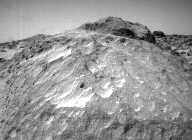
September 14 (Sol 70)
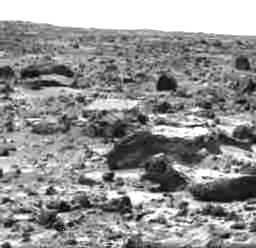
September 17 (Sol 74) |
This rover movie taken on Sol 74 shows Sojourner maneuvering around the left side of the tabular-shaped rock "Chimp." Successfully-executed rover turns are demonstrated. |
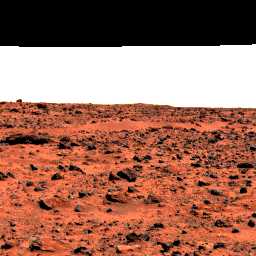 |
This enhanced color image of the Pathfinder landing site shows the eastern horizon. The elongated, reddish, low contrast region in the distance is "Roadrunner Flats." |
 |
This is a representation of sediment tails noted at the Mars Pathfinder landing site. The arrows in the figure represent the inferred downwind direction, based on our understanding of the deposition of very fine sediment around surface rocks. The inferred wind direction therefore, is from the northeast blowing toward the southwest. This wind trend matched that of light and dark "streaks" of sediment in and around Martian craters in the region that have were seen by the Viking spacecraft. The detailed map was prepared by Mars Pathfinder scientists from Arizona State University on a base image created by MPF scientists from the NASA Ames research facility. |

September 15 (Sol 72) |
This stereo anaglyph view of the rock "Chimp" was taken with the Sojourner Rover forward stereo cameras on sol 72 of the Mars Pathfinder mission. |
 |
The rock "Shark" is seen close-up in this stereo Sojourner rover image. To view this image in 3-D, use glasses with a red left eye and blue right eye. |
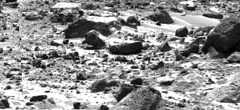 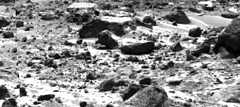
September 17 (Sol 74) |
This stereo image pair taken on the afternoon of Sol 74 (September 17) shows the Sojourner rover behind the rock "Chimp." Sojourner is now a record 12.3 m from the lander. |
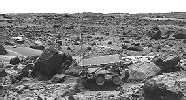 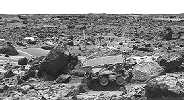 |
Left and right images of Sojourner traversing near Half Dome. |

The missions are managed by the Jet Propulsion Laboratory, Pasadena, CA, for NASA's Office of Space Science, Washington, DC.